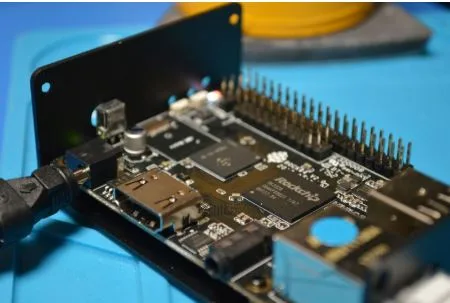Understanding Crypto Trading Bots: A Complete Guide to Automated Investment
The cryptocurrency market operates continuously, creating opportunities across global exchanges at any moment. Managing positions manually requires constant attention and quick decisions during volatile price swings. Platforms like a crypto trading bot automate trading through algorithms that execute predefined strategies without human intervention. This guide explores how these systems function and practical considerations for investors.
How Crypto Trading Bots Execute Automated Strategies
Automated trading systems combine technologies that replicate human decision-making processes. These bots use algorithms analyzing market conditions and executing trades according to user-configured rules or developer presets.
Bot functionality relies on API connections to exchanges like Binance, Coinbase, and KuCoin. APIs provide real-time market data access, account balance information, and order execution capabilities. When bots identify conditions matching strategy parameters, they send instructions to exchanges for buying or selling specific assets. The process occurs in milliseconds, far faster than manual execution.
Core Technologies Behind Trading Automation
Modern bots incorporate technological components enabling effective market analysis and execution:
Key Technologies Powering Automated Trading:
- Machine learning algorithms identify patterns in historical price data and adapt strategies based on performance
- Real-time data processing systems continuously monitor multiple trading pairs across different exchanges
- Risk management protocols enforce position sizing limits, stop-loss orders, and diversification rules
- Backtesting engines simulate strategy performance using historical data before deploying capital
A bot might analyze Bitcoin’s price movements over 90 days, identify support and resistance levels, and place orders when prices reach specific thresholds. If markets suddenly drop, built-in stop-loss features automatically close positions limiting losses.
Essential Trading Strategies Used by Automated Bots
Different market conditions require distinct approaches. Bots typically offer multiple strategies users select based on risk tolerance and market outlook.
Common Bot Trading Strategies:
- Grid trading creates networks of buy and sell orders at predetermined intervals, profiting from oscillations in range-bound markets
- Dollar-cost averaging systematically purchases assets at regular intervals regardless of price, reducing volatility impact
- Trend-following identifies momentum in price movements and enters positions aligned with prevailing market direction
- Market-neutral strategies balance long and short positions across multiple assets generating returns independent of overall direction
Grid trading performs particularly well in sideways markets where prices fluctuate within defined ranges. Traders set upper and lower boundaries with bots placing multiple orders throughout this range. As prices move, bots continuously capture small profits from each swing. Market data from Business Research Insights indicates automated trading adoption continues expanding with 42% of traders preferring bots for speed and accuracy.
DCA strategies appeal to investors building positions over time without timing markets. A bot might purchase $100 of Ethereum weekly regardless of price, ensuring exposure while averaging out short-term volatility.
Setting Up and Managing Your Automated Trading System
Implementing trading bots requires careful planning and proper configuration ensuring functionality and security. The setup process involves several critical steps determining how effectively bots operate.
Bot Setup Process:
- Select appropriate bot platforms based on supported exchanges, available strategies, ease of use, and fee structure
- Create API keys on chosen exchanges with trading permissions enabled but withdrawal rights disabled
- Configure strategy parameters including asset selection, position sizes, entry and exit conditions, and risk rules
- Start with small capital allocation to test performance and understand bot behavior
- Monitor performance regularly through dashboard analytics, reviewing trade history and adjusting parameters
When creating API keys, exchanges typically offer granular permission controls. Traders should enable only necessary permissions for placing and canceling orders while explicitly disabling withdrawal capabilities.
Security and Risk Management Considerations
Security remains paramount when using automated tools. Bots require exchange account access, making proper security protocols essential for protecting capital. Two-factor authentication should be enabled on both exchange and bot platform accounts.
Risk management extends beyond security to include trading parameters preventing excessive losses. Position sizing rules ensure no single trade risks more than predetermined percentages of total capital. Stop-loss orders automatically close losing positions before they erode significant value. Many successful bot users limit individual trade risk to 1-2% of portfolios, allowing them to withstand multiple consecutive losses.
Regular monitoring remains important despite automation. Markets experience unexpected events requiring manual intervention or strategy adjustments. Checking bot performance weekly allows traders identifying issues early and adapting to changing market dynamics.
Making Informed Decisions About Trading Automation
Automated trading offers significant advantages but functions as a tool rather than guaranteed profit generator. Effectiveness depends on underlying strategy quality, proper configuration, and appropriate use within overall portfolio management.
Successful automation requires understanding both capabilities and limitations. Bots excel at executing predefined strategies consistently, removing emotional bias, and operating continuously without fatigue. However, they cannot predict unprecedented market events or adapt to fundamentally new market structures without guidance. Analysis from Gemini’s Cryptopedia emphasizes that algorithmic trading requires continuous learning and disciplined risk management for optimal results.
Key Takeaways for Trading Bot Users:
- Automated systems execute strategies consistently but require proper initial configuration and periodic oversight
- Different strategies perform better in specific market conditions, making strategy selection crucial for success
- Security practices including API permission management and two-factor authentication protect capital while enabling automation
- Starting with limited capital and gradually scaling allows building confidence before committing substantial resources
The cryptocurrency landscape continues evolving as technology advances and markets mature. Automation tools become more sophisticated, incorporating machine learning capabilities adapting to changing conditions. Understanding these tools remains valuable for investors seeking to remain competitive in digital asset markets.




